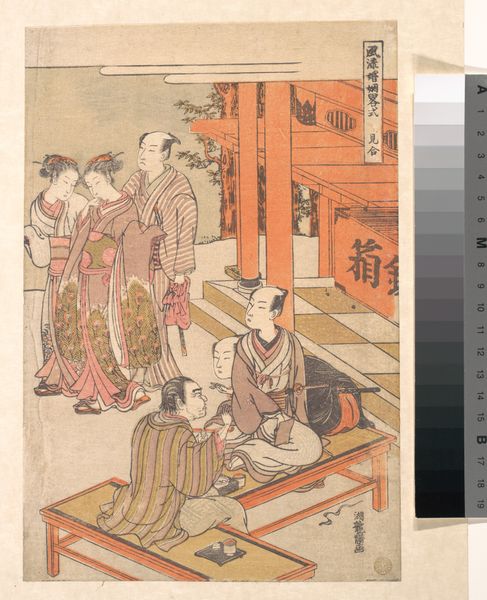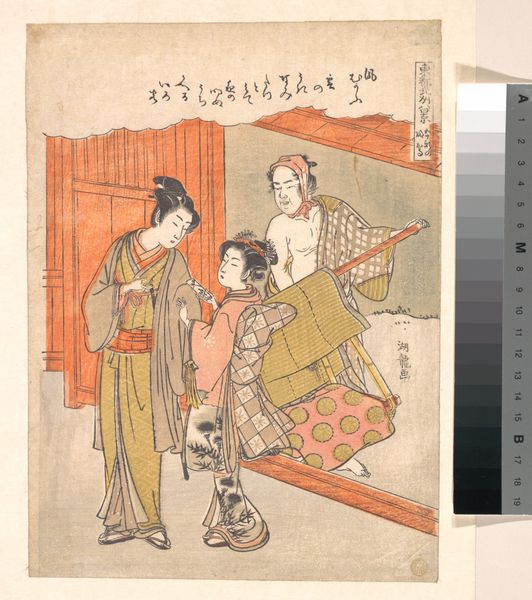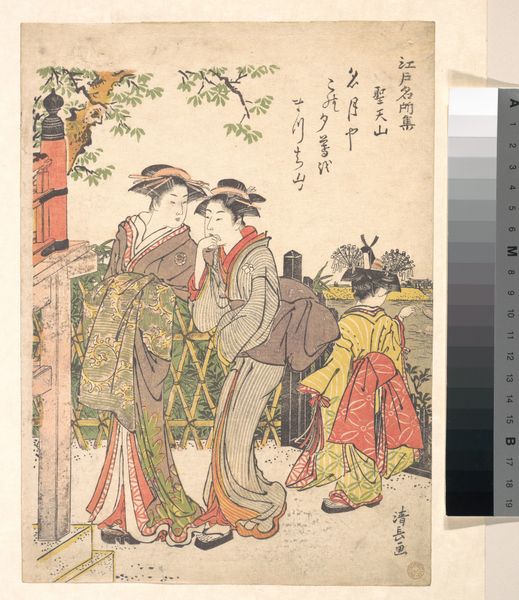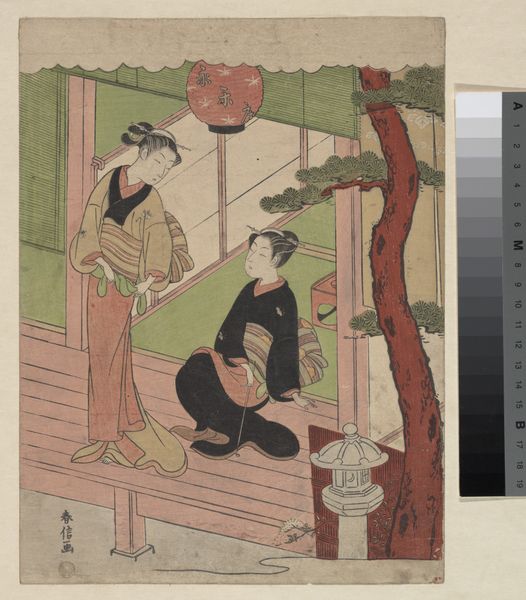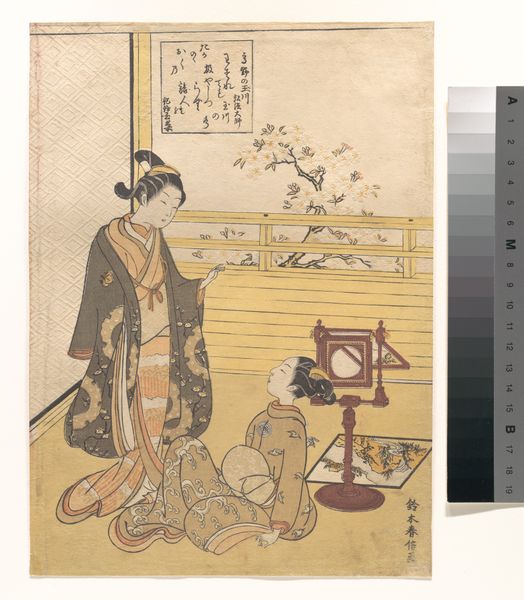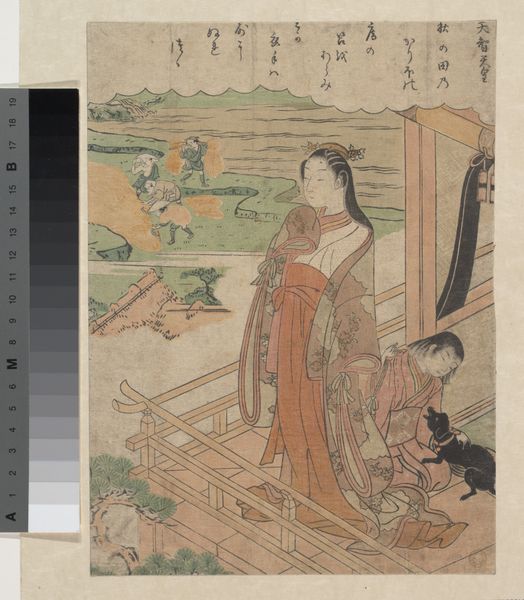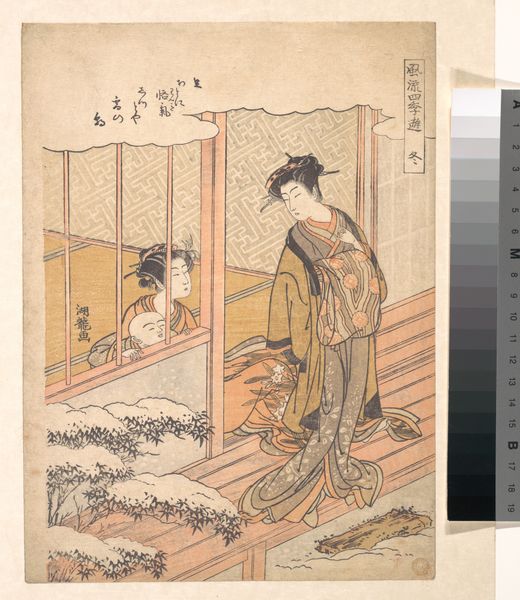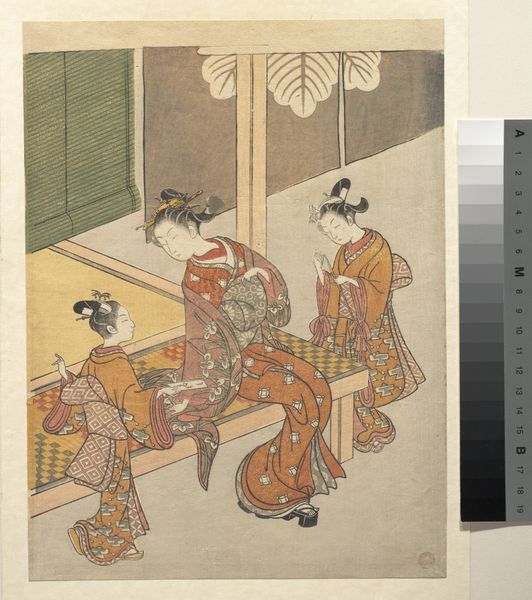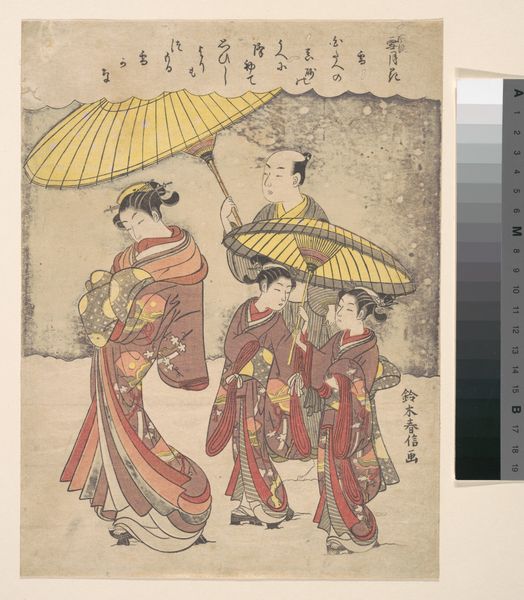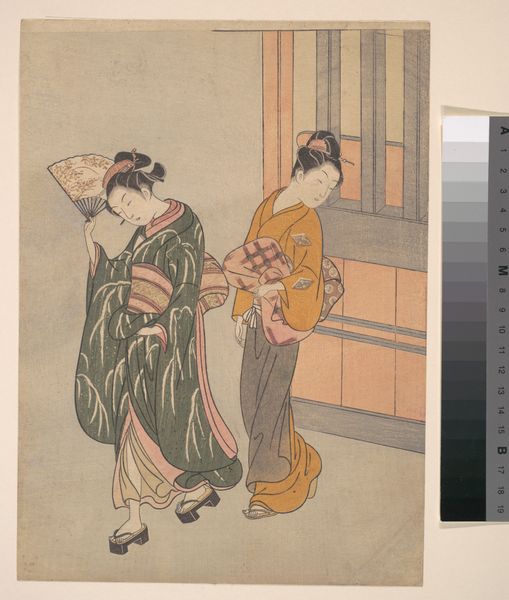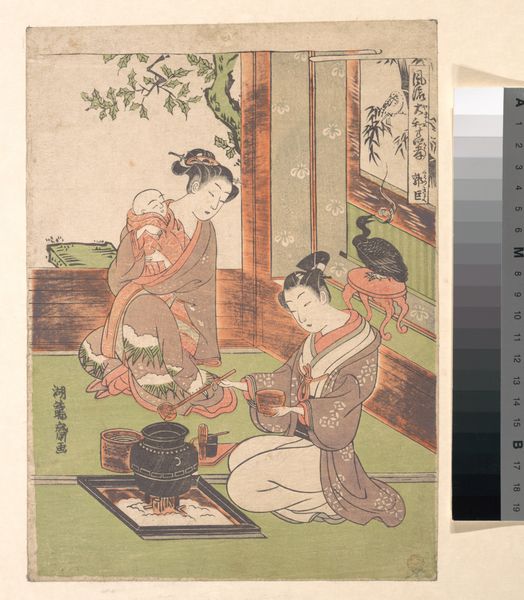
print, woodblock-print
# print
#
asian-art
#
ukiyo-e
#
figuration
#
woodblock-print
#
genre-painting
Dimensions: H. 10 3/8 in. (26.4 cm); W. 7 1/2 in. (19.1 cm)
Copyright: Public Domain
Curator: Welcome. Today we’ll be discussing "The Fifth Month," a woodblock print created by Torii Kiyonaga between 1781 and 1801. It’s part of the collection at the Metropolitan Museum of Art. Editor: My first thought is how elegantly stylized it is. The colors are so subdued, a restrained palette of peach, beige, and charcoal, giving the entire scene a wonderfully harmonious, dreamlike quality. Curator: Indeed. Kiyonaga masterfully uses line to define form and space. Note how each figure occupies its own distinct area, yet they're linked by gazes and gestures. It epitomizes ukiyo-e— "pictures of the floating world"—a genre that depicted scenes of everyday life, especially of the pleasure districts. Editor: It's a seemingly mundane snapshot but tells a larger story. The relaxed figures, one holding what looks like a broad sun hat, suggest a society valuing leisure and refinement. Yet the casual scene also obscures a social hierarchy; who are these women, what is their position relative to each other and the viewer? And what narratives do we leave out when we reduce women's history to 'leisure'? Curator: A good point. The print exemplifies an interest in genre painting that reflected the changing socio-economic landscape of the Edo period. Notice the attention to detail, the intricate patterns of the kimonos. The print's semiotic weight lies not just in what is depicted, but how. The elegant, almost aloof posture of the woman directs us toward her controlled self-presentation, a key feature in understanding Ukiyo-e aesthetics. Editor: This isn’t merely aesthetic though. These images often exoticized or fetishized certain female attributes in ways that need to be unpacked, especially when we're dealing with art that participated in systems of power. To simply observe formal choices risks reproducing those unequal power structures. It is the responsibility of modern critics to acknowledge this visual context as much as technical skill. Curator: Absolutely, acknowledging socio-political forces is vital, and it deepens how we view this woodblock. Viewing technique through the lens of politics and culture exposes those submerged implications within its gentle surface. Editor: Yes, let's carry these richer understandings forward as we explore more artworks!
Comments
No comments
Be the first to comment and join the conversation on the ultimate creative platform.
